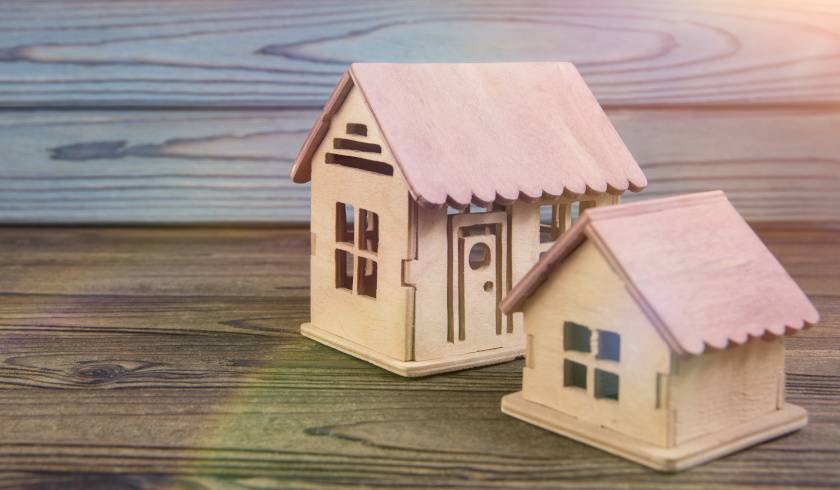The evolution of the Australian property market
After many years of growth (many would say unsustainable growth) that made the capital cities of Australia some of the most expensive places in the world to buy property, it seems like a downturn in prices is finally settling in.

Across Australia the median value of properties is expected to decline in 2019, with the sharpest falls expected to be observed in Perth, Darwin, and Sydney. Only Hobart and Canberra are bucking this particular trend.
To continue reading the rest of this article, please log in.
Create free account to get unlimited news articles and more!
The Australian property market has been a major performer for the Australian economy over many decades, so understanding how it has got to this point will be useful in predicting what might come next.
Starting in the 80s
Throughout the 80s, Australia went through a host of major economic changes and modernisations. The government floated the Australian dollar on the international market, which had the effect of rapidly turning Australia’s economy from a closed, insular system to a modern, global one. The official interest rates rapidly fluctuated, from dropping just under 5 per cent in the early part of the decade, as banking deregulation occurred, through to being just shy of 20 per cent. Yes, just imagine that kind of interest rate today, as the cash rate approaches 0 per cent.
With that came some pretty wild swings in property prices. Sydney led the way, at one point late in the decade having median property prices of $214,500 – almost double the second-most expensive city in Australia at the time (Melbourne, at $122,000). Then, over two years between 1988 and 1990, while most of the rest of Australia saw an increase in property places (Adelaide, at 24.7 per cent and Brisbane, and 22.5 per cent, respectively), Sydney prices dived 24.5 per cent, to the point that it was roughly equivalent to the prices across the rest of the country again.
Recession, rents and revival
The early 90s were one of the most tumultuous for the Australian economy, with the now-infamous ‘recession that Australia had to have’, to use then-Prime Minister Paul Keating’s words. In part because of that recession, through the early 90s, the price of property, relative to rents and incomes, remained pretty steady – there was small growth in each that was roughly parallel.
Then came the infamous bubble of the Australian property market. From roughly 1998 though to 2003, there was a sharp, and dramatic escalation of the price of houses compared to people’s incomes. That ratio then levelled off and housing prices again tracked parallel to incomes through to 2012, but the difference between the two ‘lines’ was, from that point on, significant. Much of the state of the current property market – and the reliance Australia puts on property for its very economy – came from this moment, when property became a bubble.
That is not to say there have not been periods of downturn since, however, and those vary from city (and state) to city. Looking at Sydney as the leader in property prices, for example, we see four periods of declines since 2000. Downturns occurred in 2005-2006, 2008-2009, 2011-2012, and now, with prices currently going through another decline. None of these are anywhere near as significant as when Sydney prices declined by 24 per cent, and where Sydney declines other markets often see gains. The bubble itself has yet to burst.
Which raises the question – will it?
Where to next?
When the property market began its current declines, the predictions were that it would be the ‘longest and largest’ since the downturn of the 1980s.
According to that report: “The model, known as MSHAUS, has fallen to the lowest level on record, pointing to the likelihood of a national price correction from peak to trough of between 10 to 15 per cent in real, inflation adjusted terms.”
“In nominal terms, they could be even larger.”
While that sounds like a significant number (and it is), it’s more to do with the length in which this decline is expected, rather than it being a sharp correction. So far, the predictions are playing true. As mentioned earlier, the housing market, with the exception of Hobart and Canberra, is expected to decline through 2019. There are signs of recovery – Sydney’s market, for example, bottomed out in May, but has been steadily clawing back ground since – however, it is still a sluggish space. Fears of an overnight bubble pop have yet to come to fruition, but as the old adage goes “what goes up must come down”, and Australia has been, to date, very good at keeping the property market “up”.
As the largest asset that most households in Australia own, property is a critical part of the economy – when the property market takes a downturn, the retraction tends to affect consumer confidence and spending, and that has a flow-on effect on the rest of the Australian economy.
If the property market starts to recover and again grow, the recession-like climate that the Australian market is experiencing may well also start to reverse itself. Much like what happened right back in the 80s.
By Ben Hugh, UTS communications student

